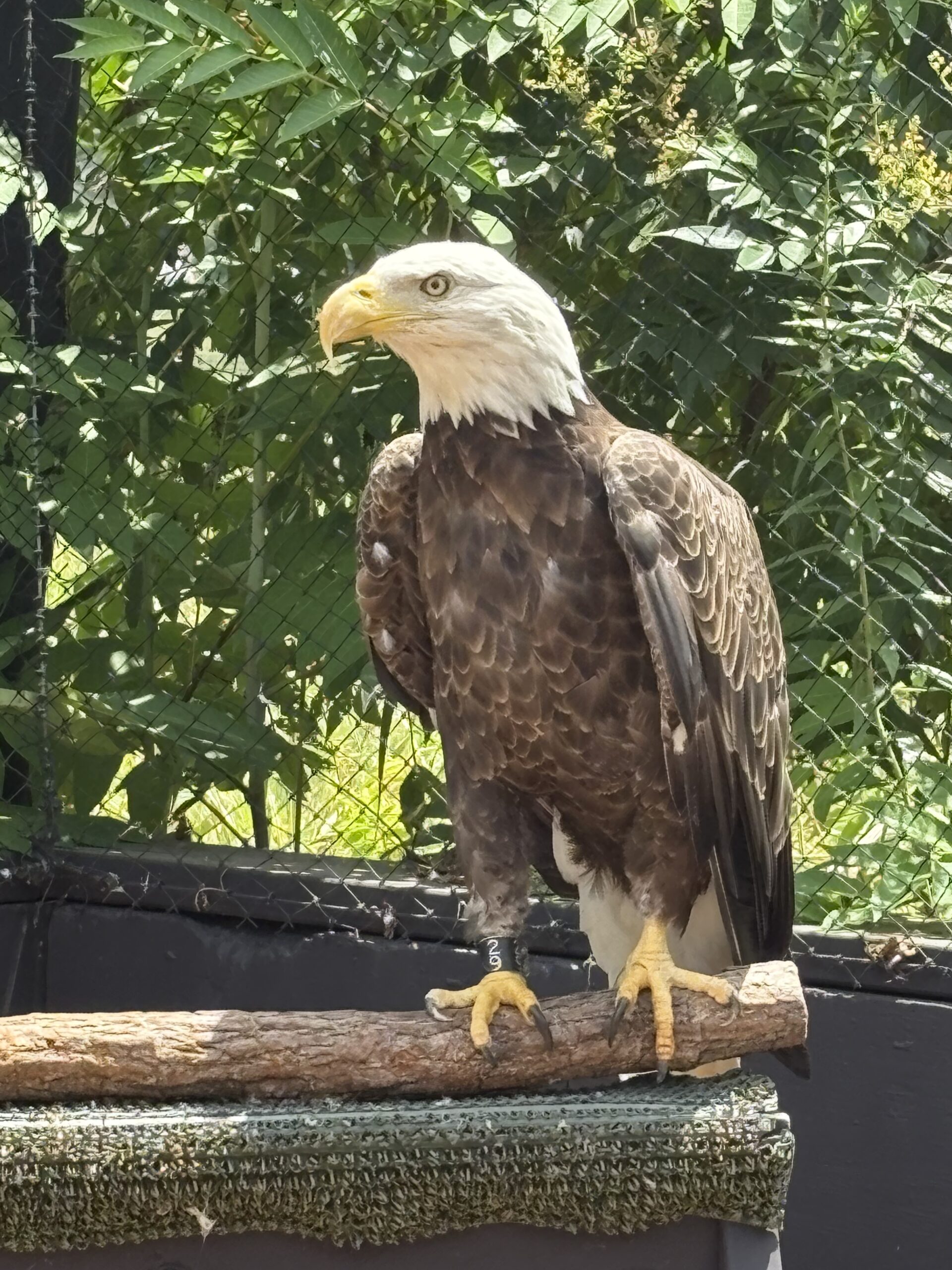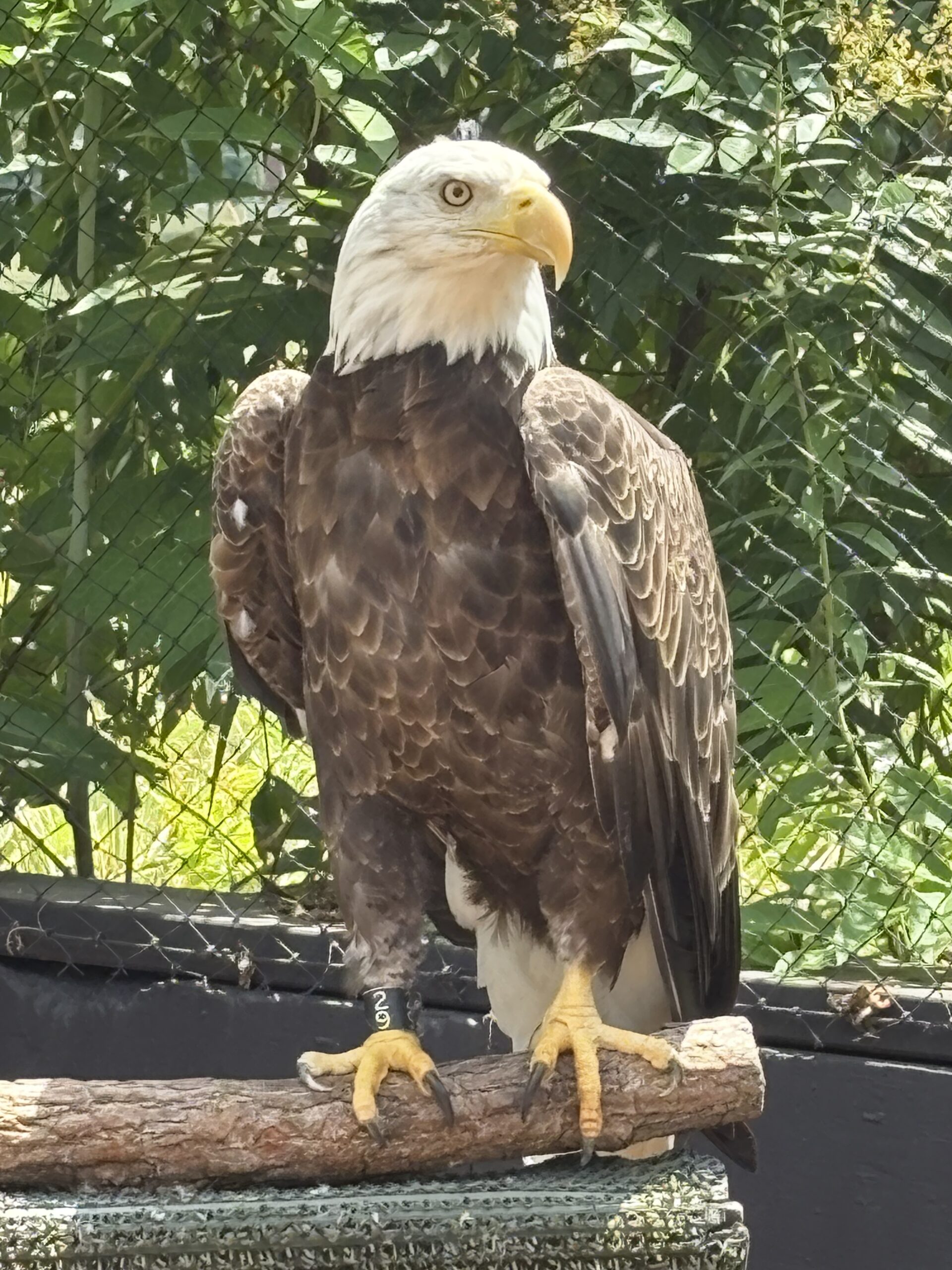HONOR
Species: Haliaeetus leucocephalus, Bald Eagle • Hatch Year: 1995 • Sex: Male • Disability: Human Socialized
Honor arrived at American Eagle Foundation in 2007 alongside his mate, Braveheart. Before joining AEF, this bonded pair played an important role in the recovery of bald eagles on California’s Catalina Island.
Once relocated to Tennessee, Honor and Braveheart continued their legacy. As part of AEF’s conservation efforts, they successfully hatched and raised nine eaglets, each one released to the wild to help strengthen the bald eagle population in the southeastern U.S.
In 2023, Braveheart passed away. Now residing at AEF Headquarters, Honor continues to serve as a powerful symbol of dedication, resilience, and the long-lasting impact of conservation partnerships. His story and the lives of the eaglets he helped raise carry on his and Braveheart’s legacy.
ABOUT THIS SPECIES
Bald Eagles were placed at the center of the Great Seal of the United States in 1782! Since then, they have served as the pride of America’s skies and the symbol of all that America stands for.
Bald Eagles obviously aren’t bald! “Bald” in this sense refers to an Middle English word that means “white headed.” When eagles fledge the nest at between 10 and 13 weeks of age, they are primarily all brown. An Eagle gets its full white head and tail feathers and yellow beak and eyes at around four to five years of age.
Bald Eagles typically mate for life. Usually, they will only look for a new mate if their faithful companion dies, but sometimes a new mate is chosen in a territorial fight over a nest.
In building a nest, Bald Eagles will choose a ‘super-canopy’ tree—one rising above the rest— near to water, with sturdy limbs and a commanding view of the surrounding terrain. Typical nest heights are 50-125 feet high. They make use of twigs, grasses, soft mosses and feathers in making their nests and normally return to the same nest each year during breeding season and add new materials to it. A new eagle pair’s nest usually measures about five feet in width and two feet in depth. As they add to it year after year, however, it can reach widths of over ten feet and weigh up to a ton or more. On the Channel Islands, where large trees are very scarce, Bald Eagles have built their nests on cliffs; and, in some coastal areas of Alaska and Canada where there are few tall trees, Bald Eagles will nest on the ground, using whatever materials are available.






